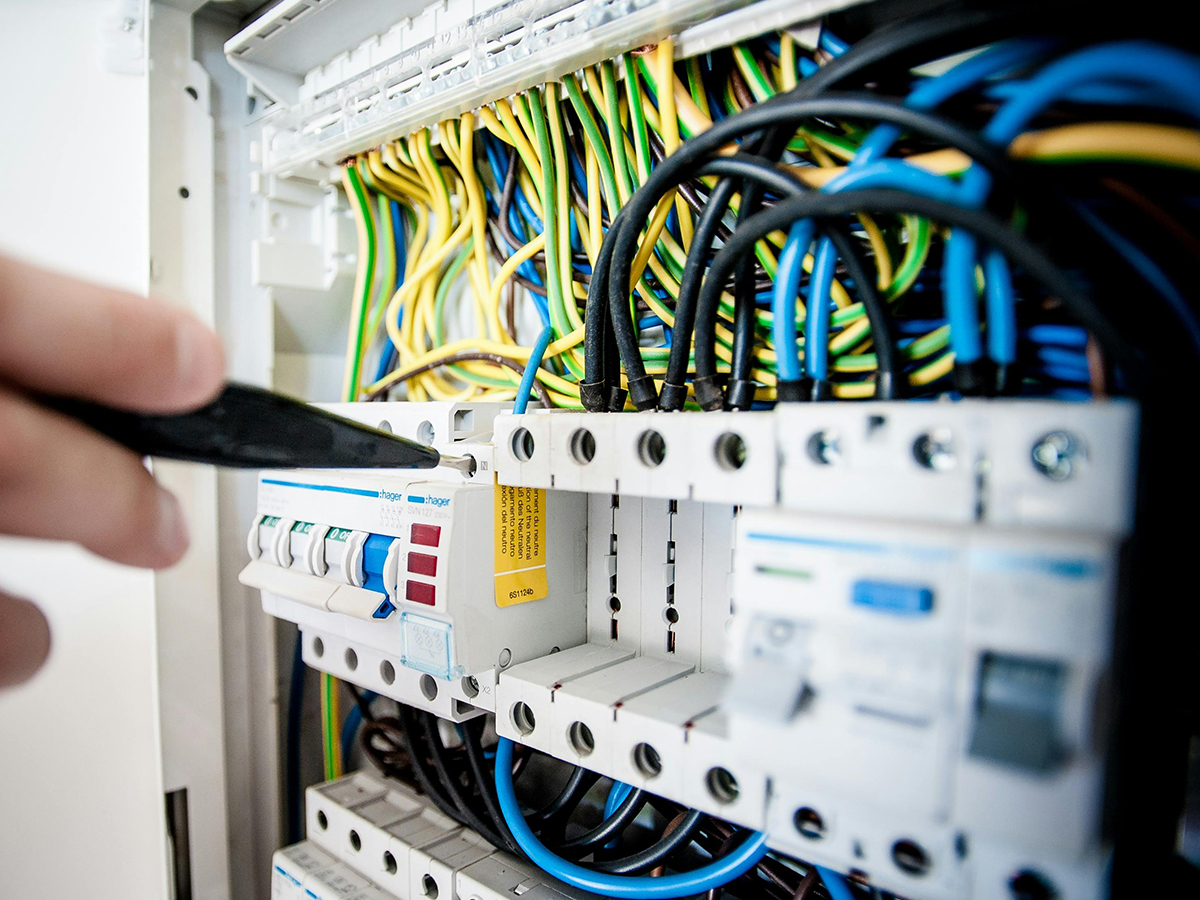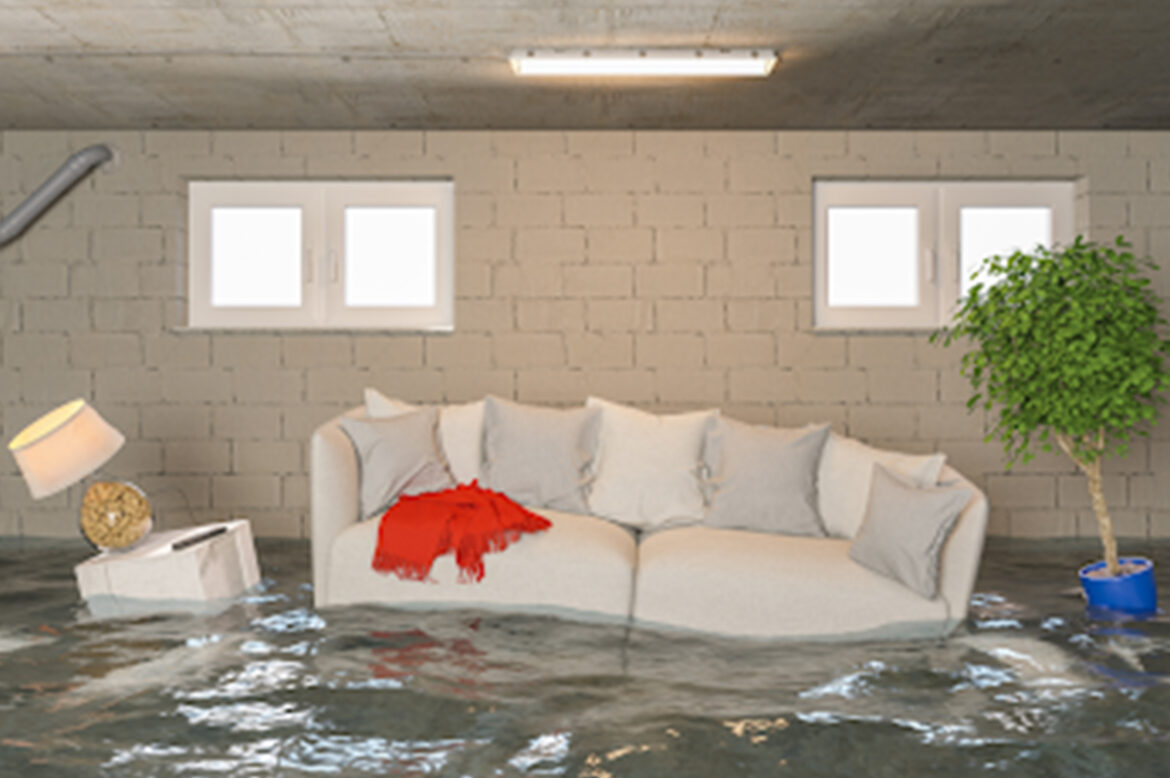Flooding can strike unexpectedly, wreaking havoc on basements and causing extensive damage to floors, walls, and valuable belongings. The key to minimizing this damage lies in swift, decisive action.
According to a study, we should plan ahead for floods and do not wait until the last minute to put plans and measures into action (Samra et al., 2011). Let’s cover seven essential steps to take when your basement floods, helping you recover faster and prevent long-term damage to your flooring and home.
Step 1: Ensure Safety First

Make safety your top priority before beginning any cleanup. To avoid electrical risks, turn off the basement’s electricity, particularly if there is water close to the outlets. Be cautious of gas leaks – if you smell gas or suspect a leak, evacuate immediately and contact your gas provider.
Also, check for structural damage to walls or floors, as floodwaters can weaken the foundation. Taking these steps ensures you’re protected as you proceed with recovery.
Step 2: Identify the Source of Flooding
To prevent further flooding, it’s crucial to determine its source. Check for internal issues like burst pipes or a malfunctioning sump pump. If the flooding is external, poor drainage around the foundation, clogged gutters, or heavy rainfall could be to blame. Identifying the cause allows you to address the issue and prevent more water from entering the basement.
Step 3: Remove Standing Water Promptly
Once it’s safe, removing standing water should be your top priority to minimize damage. Use a wet/dry vacuum, mop, or towels to soak up as much water as possible.
For severe flooding, consider renting a sump pump or calling a professional water extraction service for faster removal. The quicker you remove standing water, the less risk there is of prolonged damage to floors, walls, and belongings.
Step 4: Dry Out the Basement Completely
After removing standing water, thoroughly dry the area to prevent mould and mildew. Use dehumidifiers, fans, and open windows (if weather permits) to improve airflow.
For best results, run the dehumidifier continuously for 24-48 hours, checking and emptying the tank as needed. Proper drying helps protect your basement’s structure and finishes from lasting moisture damage.
Step 5: Assess the Condition of the Flooring and Subflooring

Once the basement is dry, the next crucial step is to assess the condition of your flooring and subflooring. Water damage can affect different types of floors in various ways, and understanding the extent of the damage helps determine whether repairs are possible or if replacement is necessary.
- Check for Warping and Buckling
Hardwood floors, such as Mercier flooring in Toronto, are particularly susceptible to water damage. If moisture has seeped into the wood, it can cause the floor to warp, buckle, or stain.
Gently lift a corner of any warped planks to check if the damage extends beyond the visible area. If the damage is localized and the wood is still structurally sound, it may be possible to sand and refinish the floors. However, if the damage is extensive, replacing the boards may be the better option.
- Examine for Mould or Mildew
Prolonged exposure to moisture can encourage mould and mildew growth, particularly on carpets, rugs, and even under hardwood flooring. Inspect the surface and the subflooring beneath carpets or under baseboards for signs of mould.
Mould can be toxic and compromise your health, so if it’s present, it’s important to address it immediately with the help of a professional mould remediation service.
- Assess Vinyl, Tile, and Concrete Floors
For non-porous floors like tile or vinyl, water damage may be less apparent but can still cause adhesive or grout issues. Vinyl floors may begin to peel or lift from the subflooring if moisture is trapped beneath.
Tiles may loosen from the surface, and grout lines may weaken. If water has seeped under the surface, it may also lead to mould or mildew in the subflooring. Inspect these surfaces carefully, and if you notice any weakness, it’s best to remove and replace the damaged sections.
- Check the Subflooring
The subfloor beneath your flooring plays a crucial role in structural stability. Even if the visible flooring appears undamaged, moisture can linger in the subflooring, causing long-term problems.
Lift a small section of flooring to check for moisture. If it feels damp or spongy, you’ll need to dry or replace the subfloor. If the subfloor is wood, it may swell or rot over time if not properly addressed. Concrete subflooring, while less prone to warping, can develop cracks or weaken if exposed to excessive moisture.
- Make the Call: Repair or Replace
If the flooring and subflooring are salvageable, drying, sanding, and refinishing might be enough to restore the space. However, if the damage is significant, you may need to replace the flooring entirely. This decision will depend on the type of flooring, the extent of the damage, and the cost-effectiveness of repairs.
Step 6: Disinfect and Sanitize the Area
After removing water and drying the basement, thoroughly disinfect the space to eliminate bacteria, mould, and any lingering contaminants. Use a bleach solution or an eco-friendly cleaner to wipe down floors, walls, and surfaces. This step ensures a clean and safe environment, reducing the risk of health issues and preventing future mould growth.
Step 7: Repair or Replace Damaged Flooring
If water has caused significant damage, such as warping or mould growth, repair or replace the affected areas. For hardwood, consider sanding and refinishing if the damage is minor, but severely damaged floors may need replacing.
For carpet or vinyl, replace sections that are beyond repair. If the damage is extensive or you’re unsure of the best approach, it’s a good idea to consult professional restoration services. They can provide expert guidance and ensure proper repairs to restore your basement’s flooring.
Ready to Restore Your Basement?
Flood damage doesn’t have to be a long-term setback. By following these essential steps, you can quickly get your basement back in shape. If you need expert help with flooring repairs or replacement, including vinyl flooring in Toronto, Capital Hardwood Flooring is here to assist.
Call us today at (416) 536-2200 for professional service and a free consultation. Let us help you restore your basement to its former glory!
